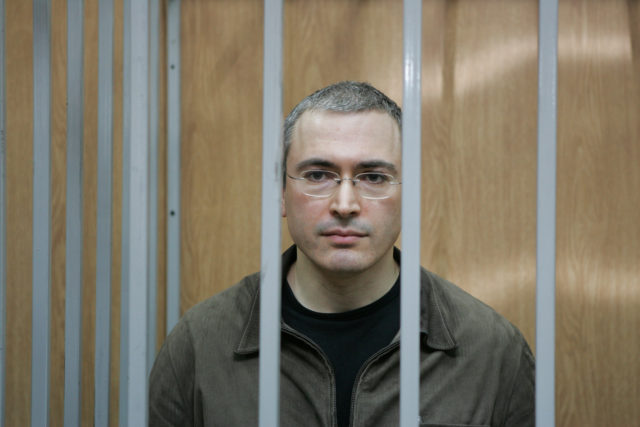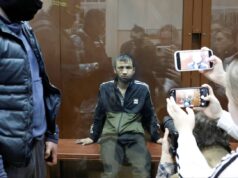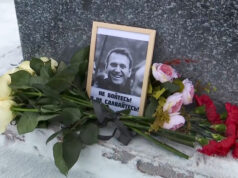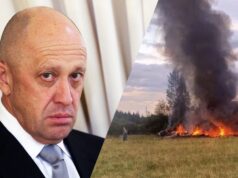
For the last 18 years, Vladimir Putin has ruled Russia. The overt impression is one of stability. Since 2003, Putin has not pursued any market economic reforms, while he has systematically eliminated political and civil liberties. In reality, however, Russia has gone through a tectonic change. On the surface, the state sector has expanded, but in reality Putin and his cronies have taken over. They have eliminated one institution after the other, leaving Russia with a new feudal system under a ruling class that has already developed a hereditary aristocracy.
When Boris Yeltsin appointed Vladimir Putin his successor on New Year’s Eve 1999, Putin looked weak, shy, and accidental, yet he was anything but. As wise budding authoritarians are, he was everything to all people while consolidating his power. As Chairman of the Federal Security Service (FSB, the old KGB) in 1998-99, he had already secured the heart of Russian power. As prime minister in the fall of 1999, he gained political standing by starting a second, very bloody war in Chechnya. In 2001, he sacked the ministers of Interior and Defense, replacing them with his own people.
Immediately after he had become president, he established his “vertical power,” reining in the 89 freewheeling regional governors. Putin forced them to obey Moscow’s laws and to pay more taxes to Moscow. His other early step was to take over the two leading television channels from two oligarchs. He took them one after the other, treating it as an economic problem and denying that he wanted to control the media, which he did.
Another big step was a major judicial reform adopted in late 2001. Russia badly needed such a reform because the courts were corrupt, underfunded, and arbitrary, controlled by the regional governors. Most of the elements of the reform were positive, such as better funding and procedural codes, but the giveaway was that Putin called for a “dictatorship of law.” Soon it turned out that the key change was that the judiciary would be subordinate to the presidential administration rather than regional governors.
During Putin’s first term, 2000-2004, the new big businessmen, the so-called oligarchs, maintained great power and influence. Putin held a meeting with a score of them once a year. At their first meeting in 2000, Putin declared that they would be allowed to keep their wealth if they stayed out of politics. The richest of them, Mikhail Khodorkovsky, CEO of the enormous oil company Yukos, did not accept that. He reformed corporate governance in his company and publicized his wealth, spending large amounts openly on building civil society. He behaved like a free man.
On October 25, 2003, Khodorkovsky was arrested, first for an allegedly flawed privatization, but later for tax fraud in the Yukos oil and gas company. All along, Putin insisted that he had nothing to do with it, though it was obviously his initiative. Khodorkovsky was sentenced to two long prison terms. Putin also claimed that Yukos would not be nationalized, but it was confiscated, and its assets were transferred to the biggest state company, Rosneft.
Pushing Aside Competitors
By taking out the biggest and most vocal businessman, Putin had quashed them all. Soon afterward, his chief of staff Alexander Voloshin, whom he had inherited from Yeltsin, retired in protest, and Putin sacked his prime minister, Mikhail Kasyanov. Both had been seen as connected with big business and functioned as counterweights to Putin. The Duma election in December 2003 became a not-very-democratic landslide to Putin’s benefit, and he was easily re-elected in March 2004 in an even less democratic election. Putin had consolidated his power.
The new businessmen who had taken over a few oil companies boosted their production by half from 1999 to 2004, and in the fall of 2003 the oil price boom took off. Putin could put the economy on autopilot without bothering about more market economic reforms, and he did. During his second term (2004-8) Putin built state capitalism.
According to the Russian Antimonopoly Committee, the share of Russia’s Gross Domestic Product (GDP) produced by the state sector has increased from 35 percent in 2005 to 70 percent in 2015. In Vladimir Lenin’s words, the state has regained control of the “commanding heights” of the Russian economy. Yet, the state control of the big companies is rather illusory. The real rulers are a small group of men close to President Vladimir Putin – former KGB officers, ministers, and senior officials from the presidential administration. They control these companies as personal representatives of their old friend Putin.
Putin took over one big state company after the other, by appointing one of his close associates chief executive and another chairman of its supervisory board. In May 2001, he had seized control over the jewel in the crown, Gazprom. His right-hand aide Igor Sechin transformed Rosneft from a small firm to the biggest listed oil producing company in the world by gobbling up good private companies through corporate raiding, with Yukos being the first one.
In 2006-7, Putin went on the offensive, merging whole industries into large state companies with hundreds of firms, such as the United Aircraft Building Corporation and the United Shipbuilding Corporation. In 2007, he did something quite extraordinary. He formed six state corporations, each with a special law. These state corporations are legally nongovernmental organizations and not subject to any external control. Their property was privatized. Thus, $116 billion of state assets and funds were transferred to nongovernmental organizations that were controlled by one man, Vladimir Putin. The most important of these state corporations were the old Soviet foreign trade bank, Vnesheconombank (VEB), the Russian Atomic Energy Company (Rosatom), and the armaments company Rostec (Russian Technologies).
State capitalism is usually associated with state strategies for investment and technological development, but Russian state capitalism involves neither central planning nor strategy. Instead, the top managers are entitled to do whatever they care to with what Russians call “manual management.” In fact, this is not even state capitalism but crony capitalism. The beneficiary owners are not the Russian state but Putin and his friends.
Self-Dealing Crony Capitalists
Putin has the legal privilege to transfer vast state funds to private companies or individuals at will. VEB can issue loans of billions of dollars not expecting to them to be paid back. State companies can favor friends through discretionary procurement or sell assets to them at submarket prices. Gazprom is the biggest source of such outflows.
The long tenures of Putin’s associates as chief executives of big state companies make evident that economic efficiency, profit, innovations, and other economic performance criteria hardly matter. Instead, trust, personal loyalty, and the transfer of funds to friendly circles appear important. No CEO of a large company anywhere in the world has destroyed more capital than Gazprom’s CEO Alexei Miller, who has lost a market capitalization of more than $320 billion. Yet, Miller sits firm after 16 years of disastrous management. Law is no restriction, while Putin’s will is everything. All too obviously, Putin approved of the intricate corporate raiding by Rosneft CEO Igor Sechin of Yukos.
Certain national interests do matter, especially geopolitical interests that are seen as crucial for the sustenance of the regime. Thus, Gazprom has obediently cut off gas whenever the Kremlin has requested the punishment of a recalcitrant neighbor, even at major commercial cost. Rosneft is happily taking over the responsibility for Venezuela, and VEB has thrown vast amounts to any harebrained scheme suggested by the Kremlin, notably $50 billion on the Sochi Olympics. Gazprom is diligently supplying the whole country with gas regardless of payments, and the big state companies maintain employment in the many company towns.
The CEOs of Russian state corporations are handsomely paid. Standard salaries of the big companies have been $25-$50 million. Members of supervisory boards are also well remunerated. As president, Dmitri Medvedev insisted on these salaries being published. It was done for a few years, but Igor Sechin, a close associate of Putin, has successfully turned them secret. Putin has awarded his lords their fiefdoms, which they are entitled to treat at their discretion. Symptomatically, his lords build themselves palaces modeled on the late 18th century, when Catherine II ruled Russia. Putin had a tasteful Italian palace built for himself for $1 billion near Sochi, since he had only 20 official residences to that point.
In 2008, Putin resigned as president after two consecutive terms, but he did not leave. He remained the dominant ruler as prime minister, while his weak aide Dmitry Medvedev became president. Rather than building up state enterprises, Putin had been indulging in rampant asset stripping together with a few close business friends from St. Petersburg. This asset stripping seems to have taken off from 2004-6. The two opposition activists Boris Nemtsov and Vladimir Milov assessed that Putin and his friends tapped Gazprom for $60 billion in 2004-7, and they have continued in like manner. Gennady Timchenko and Arkady Rotenberg receive a large share of Russia’s state contracts, notably for building gas pipelines, and they face no competition. A third major crony, Yuri Kovalchuk, is CEO of Bank Rossiya, which the U.S. Treasury has sanctioned as the spider in Putin’s financial net. Kovalchuk has also become the main owner and manager of most of Russia’s television channels that are no longer publicly owned.
The irony is that since Putin has systematically destroyed any rule of law in Russia and thus property rights, he and his friends feel compelled to transfer their cash abroad. Estimates of Putin’s personal wealth varies from $50-$200 billion. It is channeled through a large number of offshore havens, but in the end most of it is likely to have been invested in real estate in the United States and the United Kingdom. The IMF estimates total Russian capital outflow from 1992-2016 at some $750 billion, and all the small offshore island havens can only account for a fraction of that amount.
The reason Putin and his friends accumulated such amounts of money is not that they intend to retire. Putin is running on personal authoritarianism, and a dictator cannot retire – only die or be ousted. Putin needs all this money to maintain power, and he needs the power to keep his money. If he did not have both power and immense wealth, he would lose out in a society without property rights.
Nepotism, Corruption, and Resentment
Putin and his many male friends are all around 65 years of age, which is a normal retirement age. Some have retired, but most hang on. Putin has clearly made his choice for the future: nepotism. The sons of his best security service friends have become vice presidents of large state companies at 25-30, and the sons of the cronies are taking over their fathers’ companies. Russia’s crony capitalism has bred a small class of incredibly wealthy individuals, whose children are given top state positions allowing them to become even wealthier. Meanwhile the career path to these top positions is no longer open to others, breeding resentment among the young, able, and ambitious.
The Russian model of crony capitalism does not appear accidental but quite deliberate, though the Kremlin naturally does not embrace it openly. Basically, this is a recreation of an ancient feudal model or patrimonialism that the dean of Russian history, Richard Pipes, described so well in his classic Russia Under the Old Regime. It offers maximum freedom for the ruler, with far-reaching delegation to the feudal lords. That model lasted for centuries. In effect, the state corporations have transferred public property into tsarist ownership.
Can this system continue when the oil rents are drying up? It depends. Putin believes in macroeconomic stability. He has allowed the “systemic liberals” to impose hard budget constraints even on the large state companies. If the oil price stays around $50 per barrel Russian oil rents will remain substantial. Yet, the system offers no incentives to enhance productivity. State control and sheer lawlessness are becoming ever more stifling. A broad consensus expects a steady growth rate of 1.5 percent per year, but this system seems too ossified to last. At present, Russia feels quite a bit as in 1984 before Mikhail Gorbachev, glasnost and perestroika, although it is so much wealthier, cleaner, and more modern. Yet something needs to happen to break the system up.
Times have changed and with them education, openness, and income levels. This 18th century feudalism appears dangerous for Russia’s future social and political stability. In his recent documentary film about Prime Minister Dmitry Medvedev’s alleged corruption, seen by 24 million people, opposition leader Alexei Navalny has cast the glove.
Anders Åslund, Ph.D., is a senior fellow at the Atlantic Council and served as economic advisor to the Russian government in the 1990s.





